AI Personalization: The Ultimate 2026 Guide & 9 Best Tools
Netflix somehow just knows what you’ll watch next.
Spotify builds the playlist you didn’t realize you needed.
Amazon predicts what’s landing in your cart before you do.
Magic? Intuition? AI personalization.
And it’s not the future. It’s what’s happening right now. If you’re not in, you’re already behind.
Want to lead the race? Here we are with the guide that not only explains but also shows how AI-driven personalization works, why it’s a must-have for online businesses, and reviews 9 tools helping brands design experiences that feel personal at scale.
What Is AI Personalization?
Every click, scroll, or pause tells a story of intent, curiosity, or hesitation. AI personalization is what turns that data into predictions, offers, content, messages, etc.
In essence, AI personalization (artificial intelligence personalization) is the practice of dynamically adapting experiences, offers, and content using machine learning models that continuously learn and evolve.
Unlike traditional rule-based targeting (“if user clicks X, show Y”), AI-driven personalization builds adaptive systems that refine in real time, turning static interfaces into responsive, data-driven experiences.
That’s where hyper-personalization comes in. It goes a step further, combining real-time data, predictive analytics, and contexts (like device, time, and intent) to create experiences that feel truly individual. It’s not just marketing, but it’s adaptive experience design: interfaces and journeys that evolve with every interaction, making users feel understood, not targeted.
AI-Driven Personalization: Real-World Examples
Ecommerce is not where AI applications end. Across industries, the world’s top brands have already proven that personalization isn’t a buzzword. It’s a growth engine.
McKinsey reports that fast-growing companies generate 40% more revenue from personalization, while 76% of customers feel frustrated when experiences aren’t tailored to them.
In streaming, Netflix’s AI-based filtering system not only keeps users watching but also saves over $1 billion annually by reducing churn.
In e-commerce, Amazon’s predictive recommendation engine drives 35% of total sales, turning browsing patterns into purchase intent.
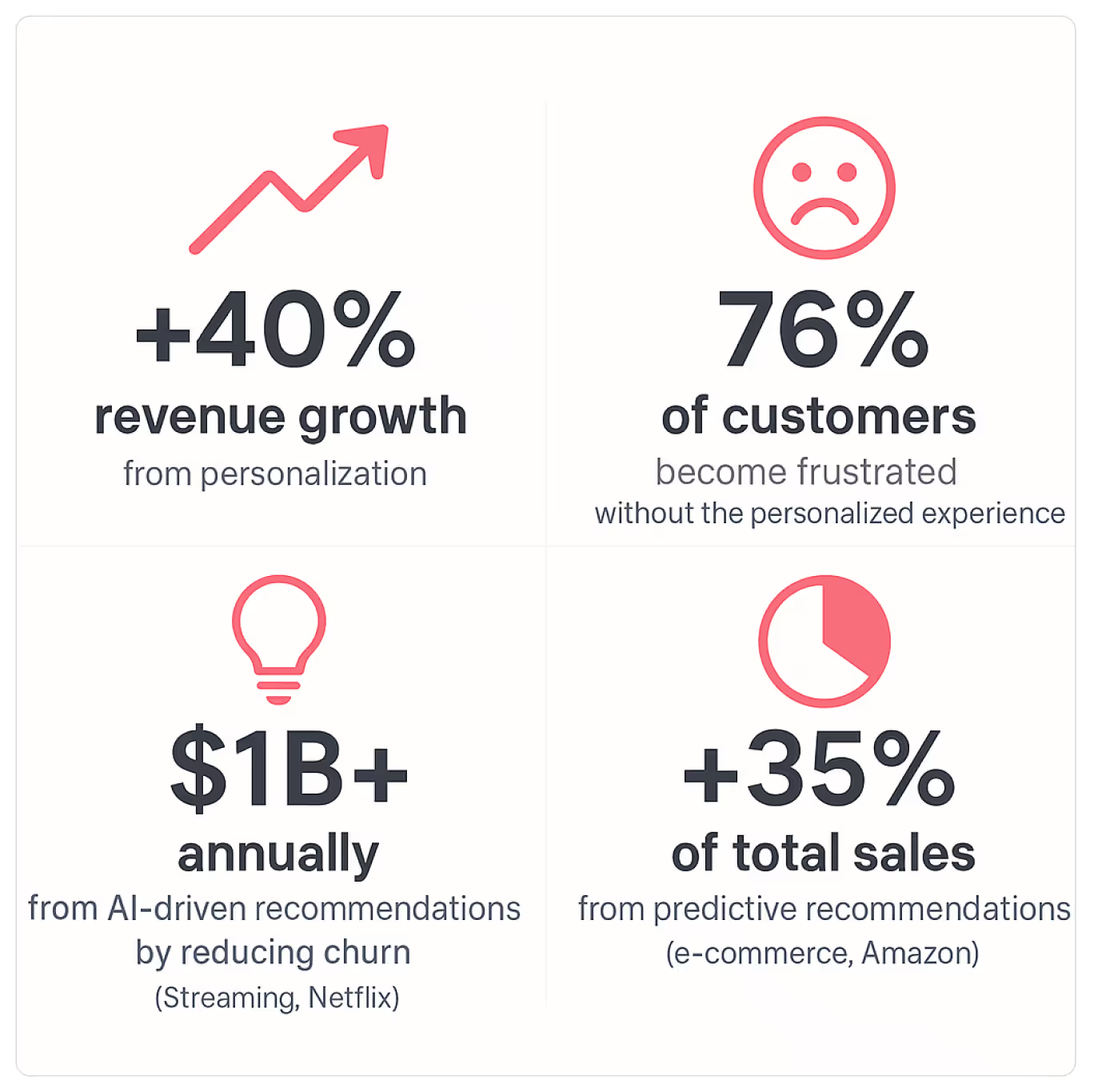
Spotify uses machine learning to personalize playlists like Discover Weekly, which accounts for a major share of listening time, while YouTube fine-tunes its “Next Up” queue with reinforcement learning to maximize watch duration.
In fintech, Revolut applies predictive models to suggest spending insights and financial products before users even ask, improving satisfaction and retention.
In healthcare, Philips HealthSuite AI adapts treatment plans and preventive recommendations in real time, helping providers deliver faster, more precise care.
And in Web3, Brave Browser personalizes the browsing experience through on-device learning, proving that relevant, adaptive content doesn’t have to come at the cost of privacy.
Across all these examples, AI for personalization does more than recommend products; it reduces churn, increases conversion, deepens engagement, and earns loyalty.
AI Personalization tools: top 9 solutions for your toolkit
Choosing the right AI personalization tool isn’t about chasing the shiniest tech but about finding the system that actually fits your business goals.
Here are nine platforms helping brands rethink how personalization actually works across channels, journeys, and contexts.
1. Yespo
Yespo is an Omnichannel Customer Data Platform that provides ready-to-use solutions for online services, retail, and ecommerce that are designed to boost sales and retain customers. Brands can use AI, product recommendations, behavioral triggers, and messaging across nine channels to make the customer experience more personal, all without needing developers.

Yespo combines all of a customer's data into one profile and makes it available for activation through predictive AI tools:
- Product Recommendations: The system can predict what people will buy next with up to 69% accuracy, even when there isn't much data available. It also suggests new products that are relevant to the user. These algorithms already boost sales by up to 226% when they are used in recommendation blocks on the site.
- Predictive Segmentation: AI analyzes how people behave and determines those customers who are most likely to buy something in the next 30 days. This helps keep communication focused on people who will probably to buy and cuts costs by up to 50% on pricey channels.
The platform offers nine channels for customers to communicate (email, mobile push, web push, SMS, Viber, pop-ups, in-app, App Inbox, and Telegram bot), allowing you to fully customize their experiences at every touchpoint.
2. Adobe Target
Adobe Target, part of Adobe Experience Cloud and powered by Adobe Sensei, is an enterprise-grade personalization and experimentation platform. It helps businesses automate, test, and scale personalized web, mobile, and email experiences.

Features like Auto-Target and Automated Personalization use historical and real-time behavior to deliver dynamic content, similar to Dell's global optimization. Ideal for enterprises needing precise testing and deep analytics integration, it combines predictive personalization with powerful A/B testing to evolve user journeys based on engagement data.
3. Braze
A customer engagement and personalization platform that helps brands deliver tailored messages across email, push, SMS, in-app, and web channels. Braze unifies data, context, and automation to turn every interaction into a connected experience.

Its BrazeAI suite predicts user behavior, generates personalized copy, and optimizes send times, helping brands like Burger King and HBO Max create real-time, emotionally intelligent communication while maintaining brand voice and timing accuracy.
4. Dynamic Yield
Dynamic Yield's Adaptive Experience OS uses AI to unify behavioral data, affinities, and predictive modeling for real-time personalization across all touchpoints. Its AI engine instantly adjusts recommendations and design, as seen in IKEA's synchronized online and in-store personalization.
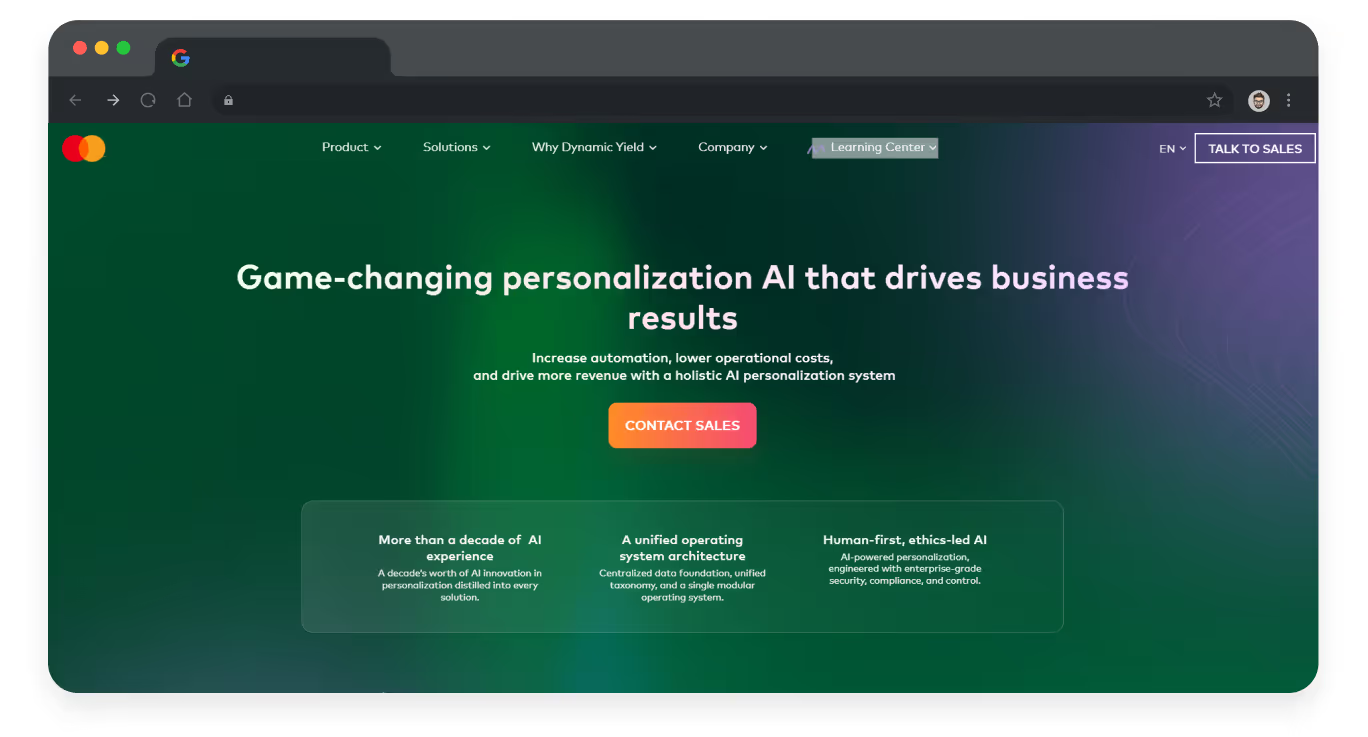
The “Shopping Muse” conversational AI interprets natural language intent. This tool helps retail and e-commerce teams combine human insight with algorithmic precision for contextual experiences.
{{block}}
5. Insider
Insider's Sirius AI, an AI-native omnichannel personalization and customer journey builder, automates campaign creation and optimization via prompts. Its Architect visually maps journeys across web, app, and messaging. AI features like Send-Time Optimization and Next-Best Channel ensure timely and relevant messaging. Samsung uses Insider for scalable cross-channel experiences, reducing friction in personalization strategy and execution.
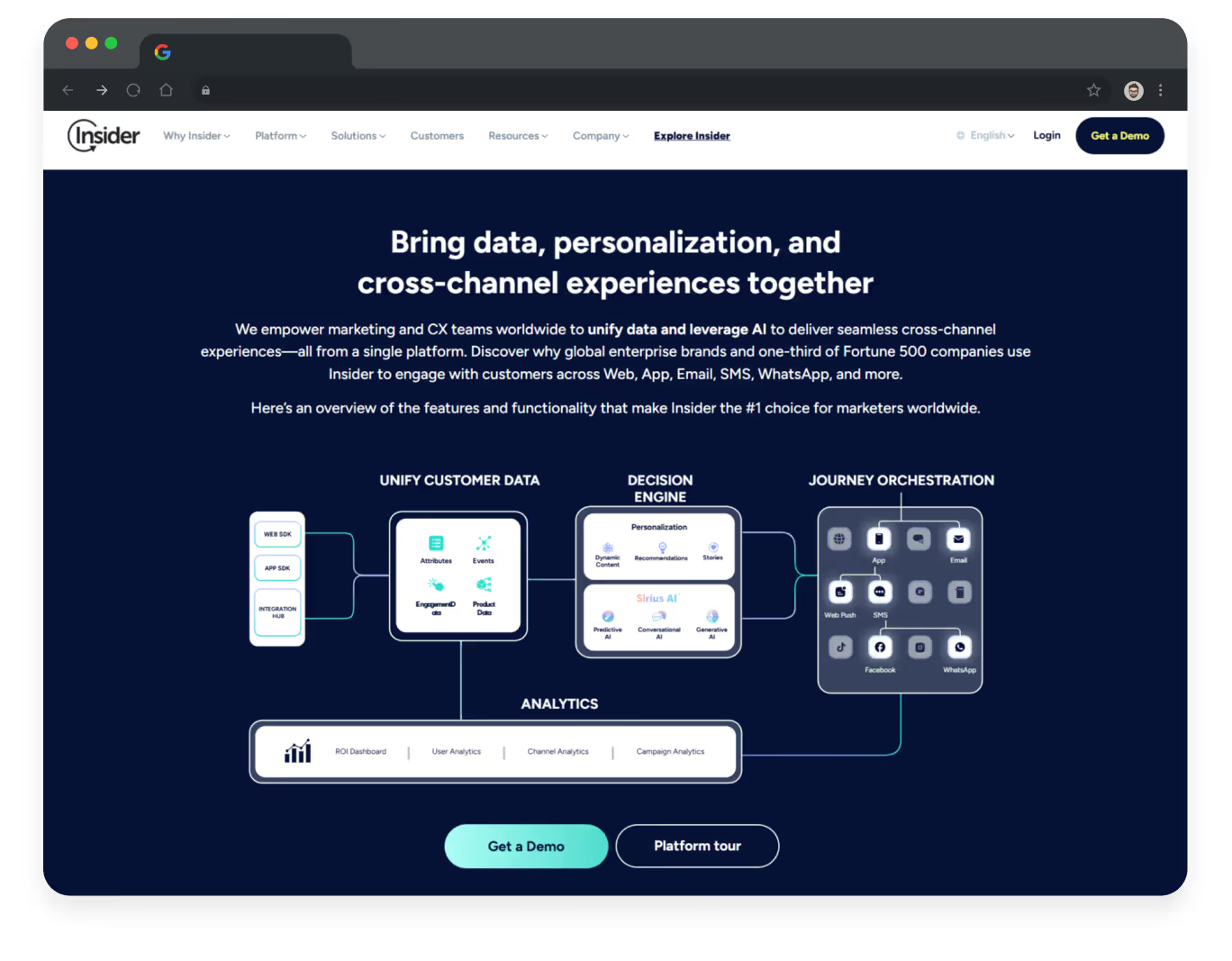
6. Monetate
Monetate's Orchid AI platform uses predictive modeling and NLP for personalized product, content, and search recommendations in e-commerce. It improves product discovery with intent-based search and dynamic social proof. Popular with retail and travel brands, it simplifies complex data into actionable recommendations for scalable 1:1 personalization.
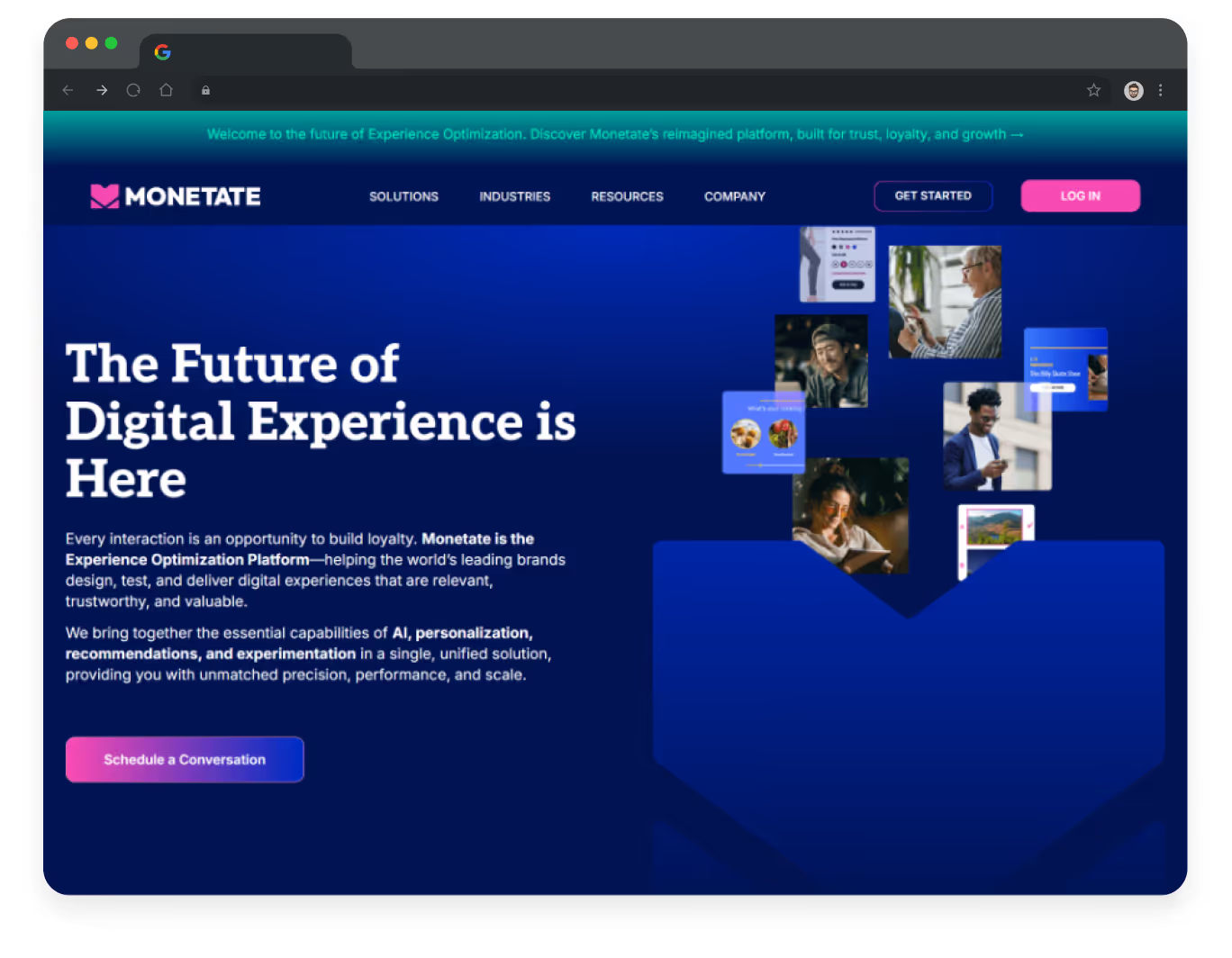
7. Personyze
Personyze offers AI-based personalization for SMBs and mid-market teams, integrating behavioral signals, CRM data, and geolocation for real-time, tailored content like banners and recommendations. Its visual WYSIWYG editor enables full 1:1 personalization with minimal technical effort, empowering non-technical teams with adaptive content design.
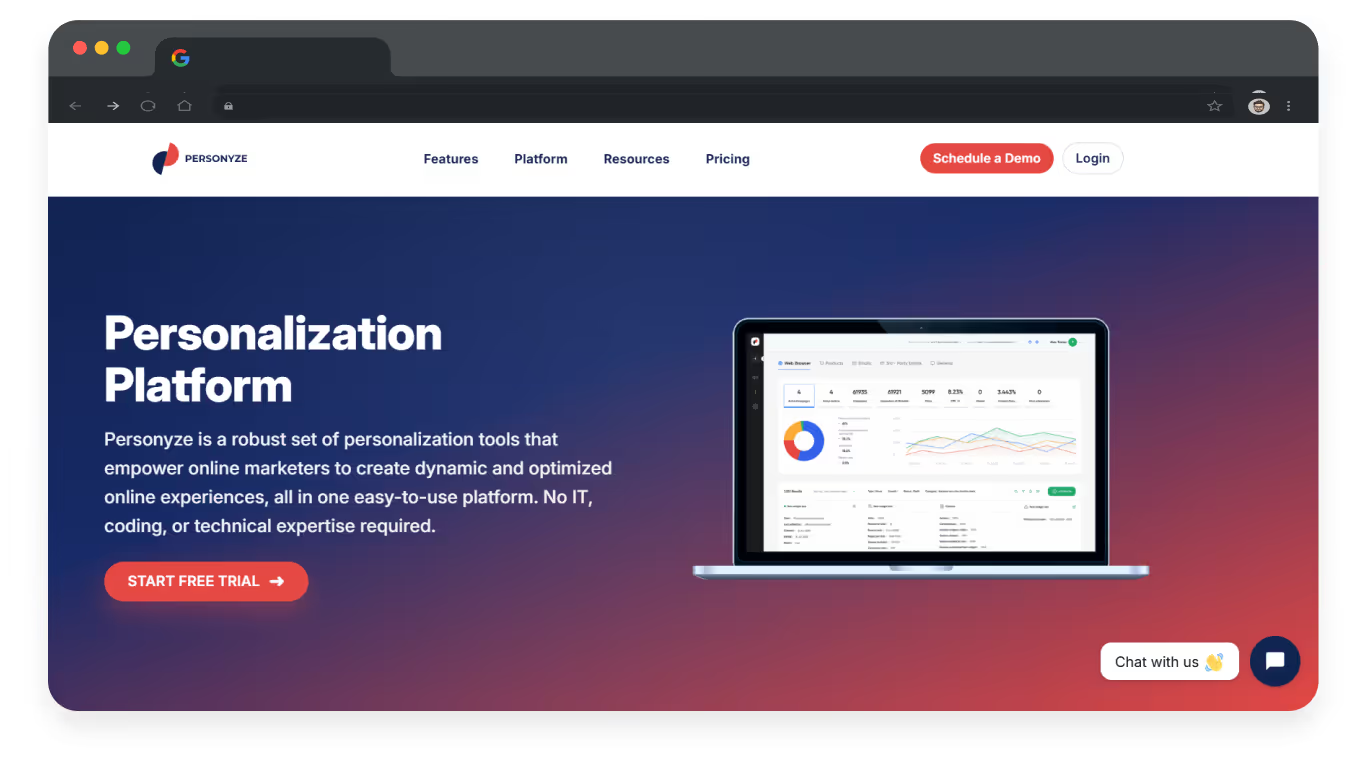
8. Webflow Optimize
Webflow Optimize (formerly Intellimize) integrates AI-powered website personalization and testing directly into Webflow. It uses machine learning to dynamically adjust headlines, CTAs, and layouts for visitors, while its AI Content Studio generates adaptive copy for faster creative testing. This tool is ideal for design-led teams, streamlining personalization into their creative workflow without extra development.
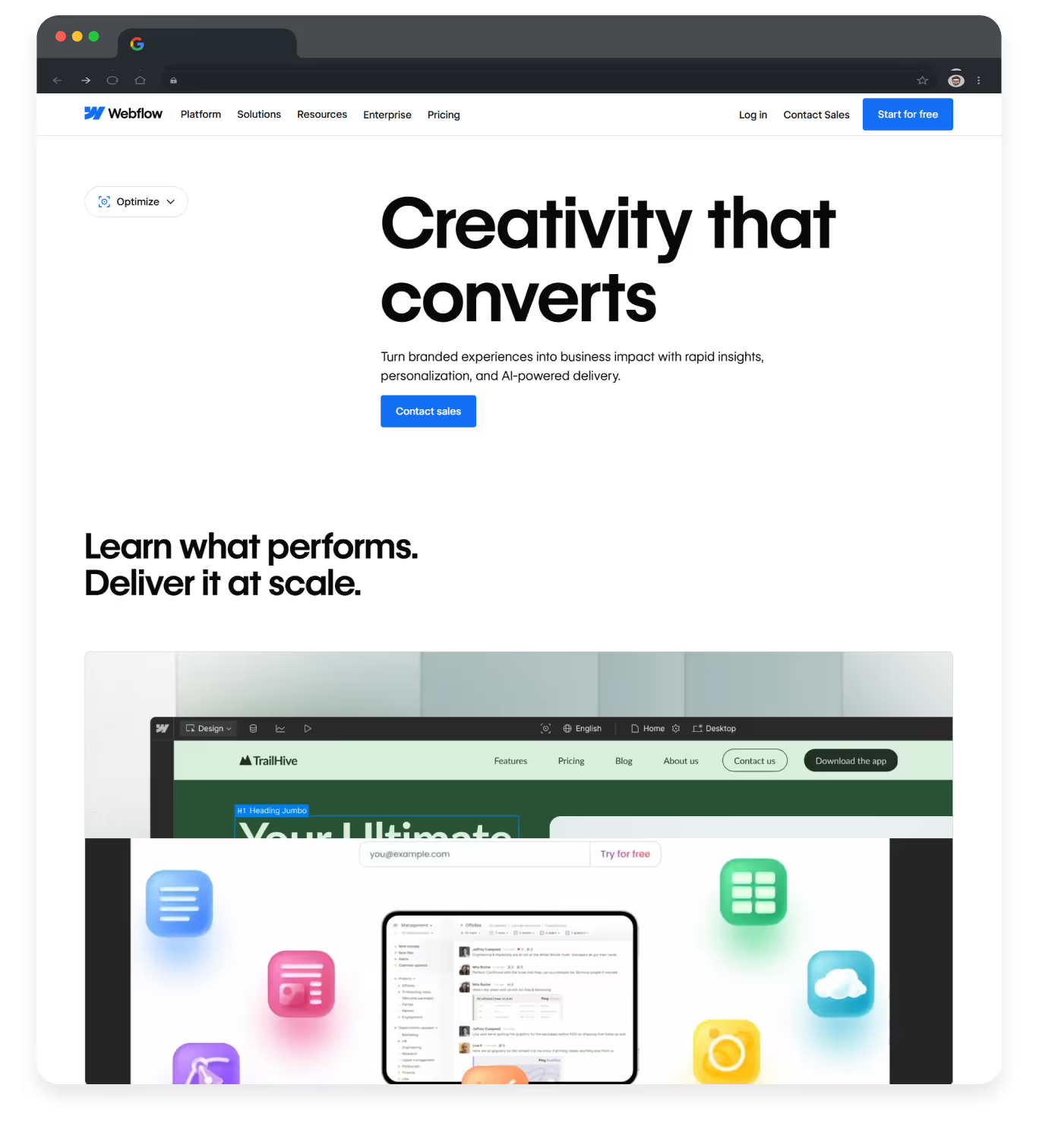
9. Algolia Recommend
Algolia Recommend offers a vector-based system for real-time personalization, tailoring search and product suggestions by analyzing user context with millisecond latency. Used by brands like Decathlon to personalize catalogs and rank products based on behavior, it provides speed, precision, and relevance at scale.
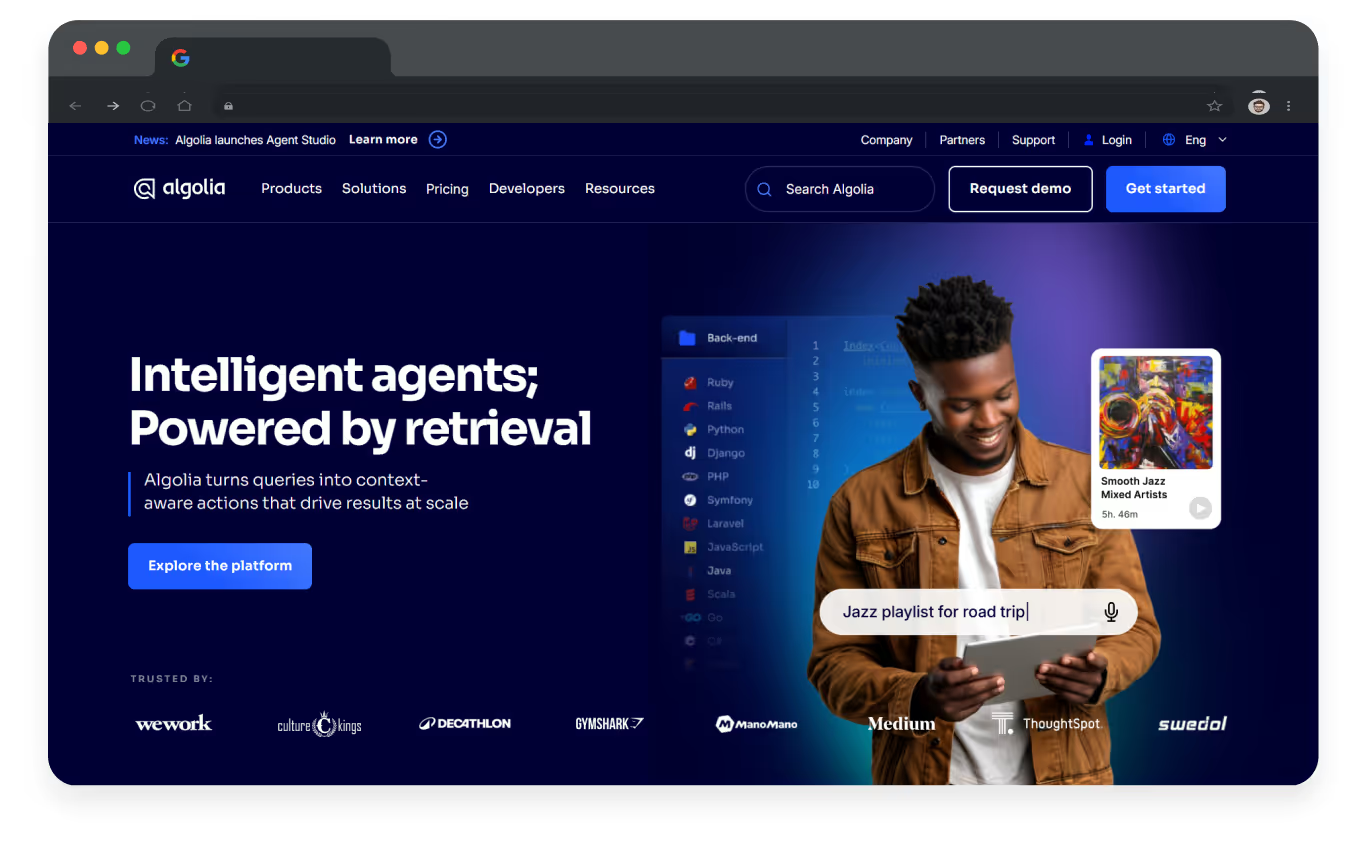
AI-Powered Personalization Guide: Steps Before Implementation
Even the smartest AI personalization engine is only as effective as the experience it personalizes. Without well-structured analytics, UX/UI, and conversion strategy, even the most advanced AI won’t deliver full value.
So, here are the steps to take before implementing AI tools into your project and maximizing their effectiveness.
1. Audit Your Data and Website
Before introducing AI, make sure your data is reliable, and your platform is ready to interpret it. A proper analytics setup and UX audit are the very first steps to take, as they help unify CRM, CDP, and behavioral data into a single, consistent flow of insights. It’s the groundwork for any conversion optimization strategy.
In the Glo™ website redesign, improving analytics accuracy and fixing usability issues led to a 22% increase in business conversion. The process involved switching to Google Analytics 4, mapping user journeys, and defining custom event parameters to identify where users dropped off most frequently. This clarity revealed that certain pages required simplification, which directly improved engagement and conversion performance.

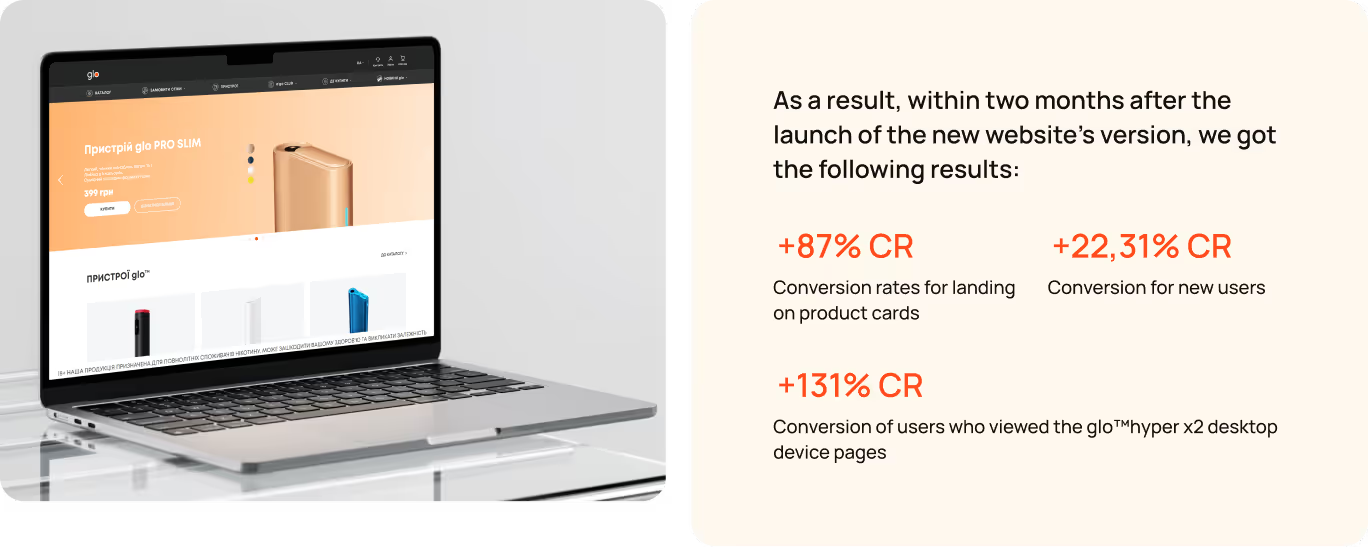
And that’s even before any AI for personalization is implemented.
2. Map Customer Journeys
AI works best when it understands user context. Mapping customer journeys helps reveal not just how users behave, but why, allowing you to pinpoint the exact moments where personalization can make the biggest impact.
In the Samsung Experience Store project, a guide to customer journey and emotion mapping not only explained how emotional triggers and behavior insights intersect to build experiences that feel intuitive but also uncovered crucial offline-to-online transitions.

3. Select and Test AI Tools
Once your analytics and journey mapping are in place, it’s time to choose your tools, but it’s better to avoid rushing into full automation. Start small with A/B or multivariate testing to validate your hypotheses and understand how users respond to different changes and personalized experiences.
Thus, A/B testing in UX design can show what truly drives engagement before you scale. After 16 days of A/B testing for Crystal Clear Memories, we found the most effective design that made everyone happy with the product page (PDP) views +14%, session duration +11%, and bounce rate -7%.

4. Measure ROI
The impact of personalization shouldn’t be measured only by clicks or time-on-site. Instead, focus on business outcomes like Customer Lifetime Value (CLV), Average Order Value (AOV), conversion rate, and engagement uplift.
After personalization launches, tracking how these deeper metrics evolve helps connect design and AI investments directly to business growth.
5. Keep Checking and Improving
AI personalization isn’t a “set it and forget it” process. It thrives on continuous learning. And so should your UX. Regular conversion rate optimization keeps your data, design, and personalization logic aligned as user behavior shifts over time.
Ongoing optimization, testing, and iteration help businesses evolve their platforms continuously, along with the customer needs and wishes, allowing AI systems to learn from progressively cleaner, more efficient experiences.
{{block}}
AI-Based Personalization: Trends, The Future, and Next Steps
AI personalization is no longer about reacting to behavior but about predicting it.
The next frontier combines generative and agentic AI, building systems that create, decide, and adapt on their own, and offers something unique to each user in real time.
Contextual and multimodal personalization will push interfaces beyond screens, integrating voice, gestures, and environments to make digital touchpoints feel instinctive.
The future belongs to brands that can connect these layers of data, design, and decisioning into one intelligent ecosystem.
Because the question is no longer whether you personalize, but how fast you can evolve.
However, AI doesn’t replace human insight. It amplifies it.
And only when paired with a clear analytics foundation and smart UX does it become a true advantage, turning adaptation into your growth strategy.
FAQ
What is AI personalization?
AI personalization uses artificial intelligence, machine learning, NLP, and predictive analytics to tailor experiences dynamically by adapting content, recommendations, and journeys based on user behavior, preferences, and context in real time.
What is the 30% rule in AI?
The “30% rule” reflects a common benchmark in AI adoption — most organizations see around 20–30% gains in conversion rates, efficiency, or revenue growth when AI-driven personalization systems are implemented effectively (McKinsey).
Can you make a personalized AI?
Yes. With enough user data and AI infrastructure, businesses can create AI-driven systems that act like individualized assistants, which includes recommending products, personalizing onboarding, and even handling support interactions autonomously.
Question reference
Answer reference

More real-world Turum-burum cases?
Review our vast portfolio of cases in a variety of business fields to make sure of our expertise.
Go to Portfolio


.png)













.png)

